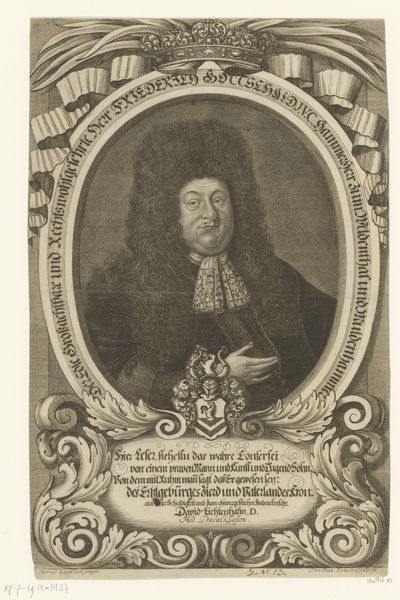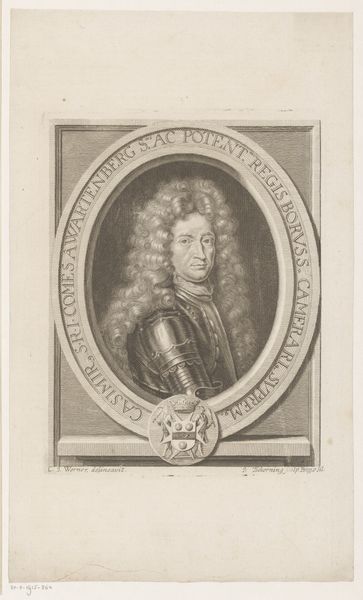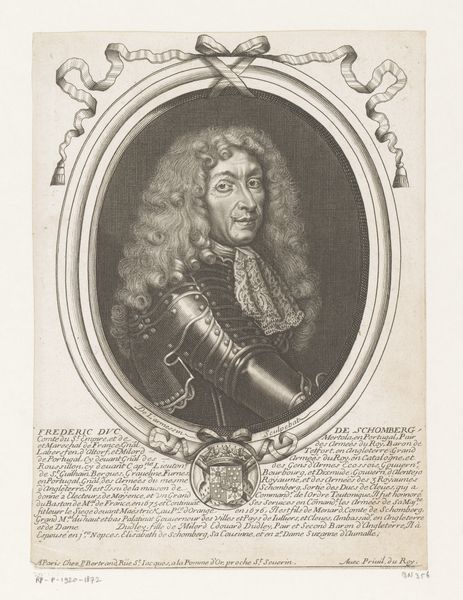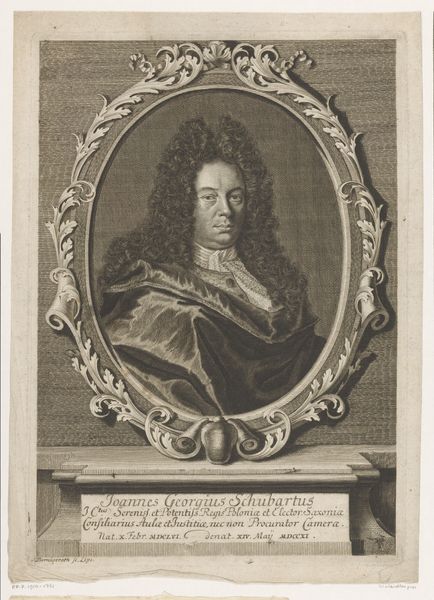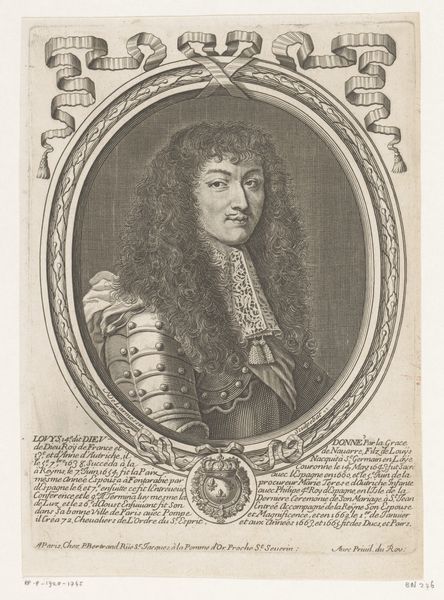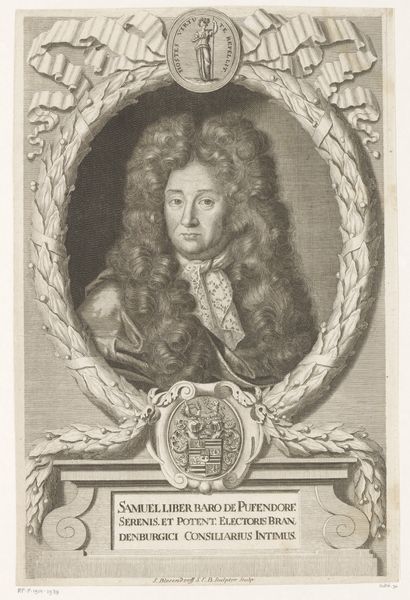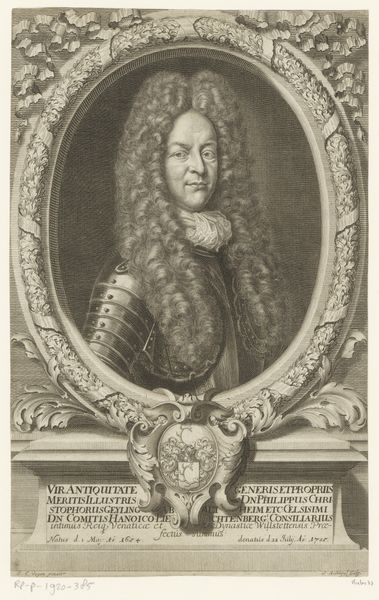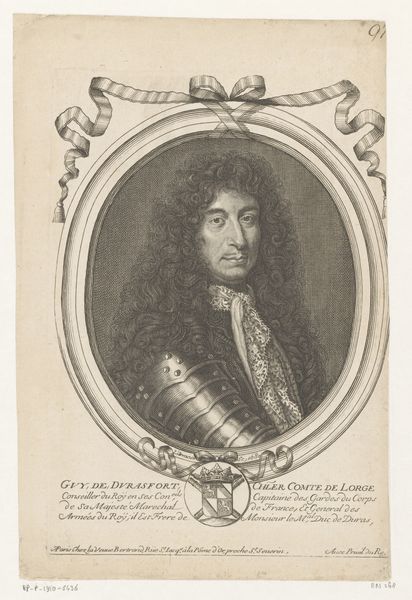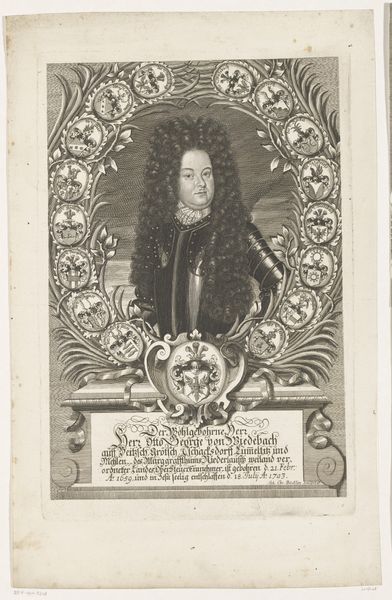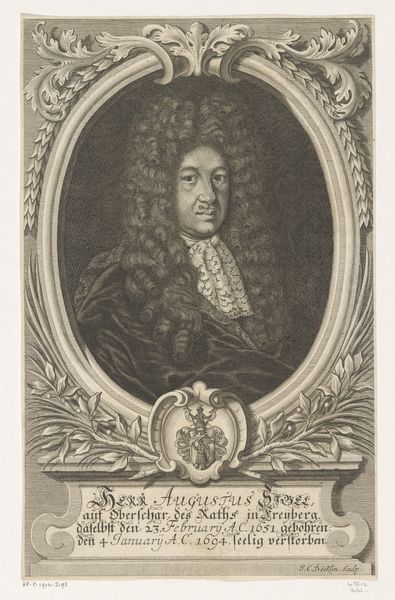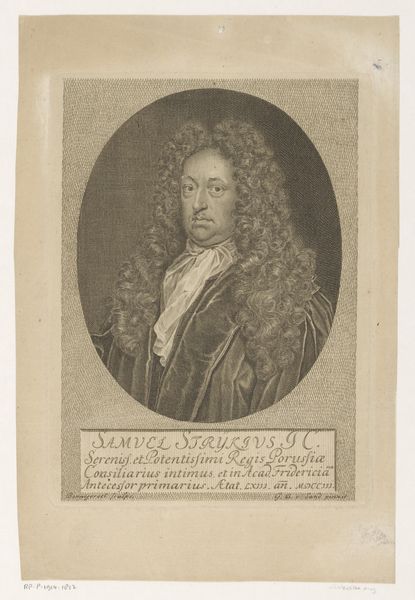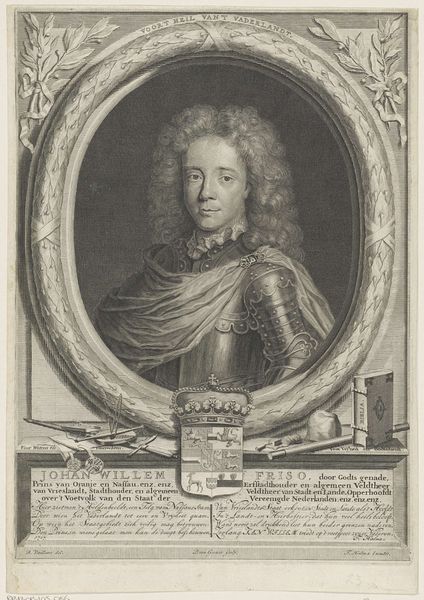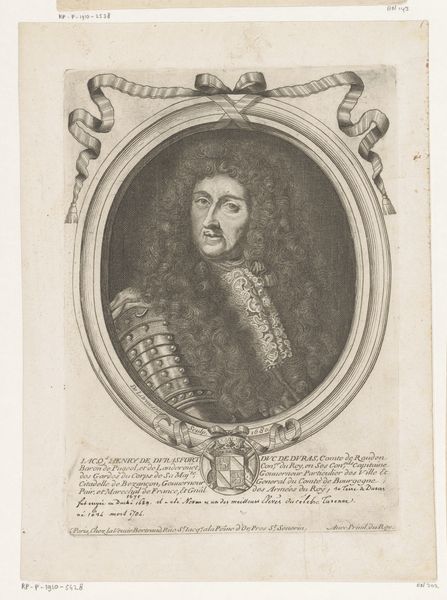
print, engraving
#
portrait
#
baroque
# print
#
old engraving style
#
history-painting
#
engraving
Dimensions: height 462 mm, width 348 mm
Copyright: Rijks Museum: Open Domain
Curator: The piece before us, residing here at the Rijksmuseum, is an engraving from 1689 titled "Portret van Willem III, prins van Oranje." It's by an anonymous artist. Editor: It strikes me as instantly imposing—the tight framing of the oval portrait, that ornate, leafy border. And the light! The high contrast pulls William forward, doesn’t it? Curator: Indeed. William's position as both Prince of Orange and King of England, Scotland, and Ireland profoundly shaped the political landscape of Europe. To consider the Glorious Revolution— the power dynamics that deposed a monarch, solidified parliamentary sovereignty, and impacted the rights of religious minorities – William's identity as a protestant king invited a wave of complicated issues, of allegiance and freedom. How does the presentation speak to those tensions, would you say? Editor: Well, looking at the execution... the meticulous details of the wig and lace. There is an undeniable sense of formality, even stiffness, which contrasts, I think, with what might be understood about his military campaigns, and what some might understand as acts of valor. Do the embellishments here obscure those more personal qualities? Or recontextualize it for a more staid audience? Curator: These state portraits are rarely simply objective records. Consider, that this was likely produced and widely disseminated during his reign—in that moment, such imagery acted as strategic propaganda. To create an image, for those newly governed, of strength, resolve, divine right, and power. Editor: Absolutely. The text beneath the portrait adds to that sense of grandiosity, shortening "William" to the imperial, latinized CVILELMVS—and adding "...etc., etc., etc." to imply a host of other titles that it cannot fully list. Curator: Beyond that, the use of printing, as a medium—to your point about it reaching new audiences—is inherently critical. Here it’s vital. It reinforces not just visual authority, but accessibility. What we see, I think, speaks volumes about constructing an identity as something to be consumed en masse, a proto version of virality, if you like. Editor: Fascinating how even the smallest detail— the Latin, the abbreviations, the embellishments— contributes to the carefully crafted impression that resonates even now. It reminds us of the power of image, and of our present-day obligations to interpret it through historical lenses. Curator: Yes. The context gives incredible shape to even a traditional print. It shows how social status can both emerge from an artwork and give it significance.
Comments
No comments
Be the first to comment and join the conversation on the ultimate creative platform.
